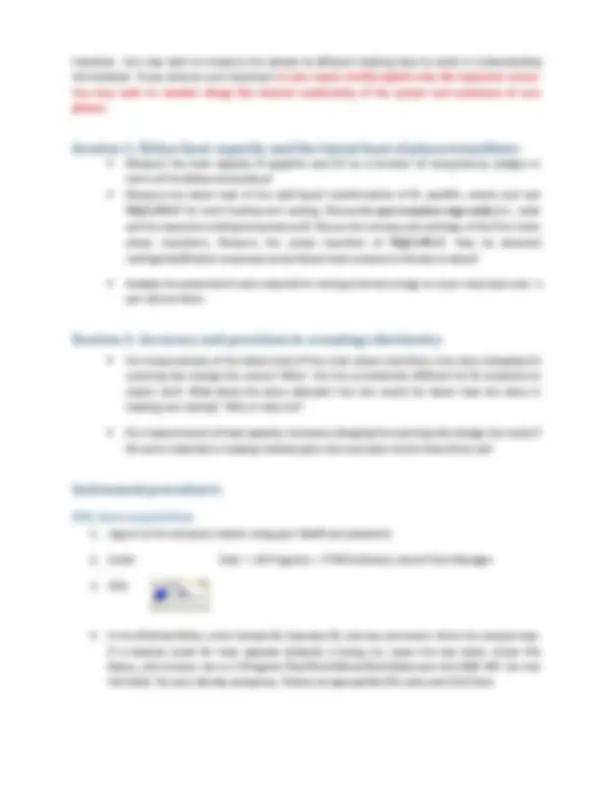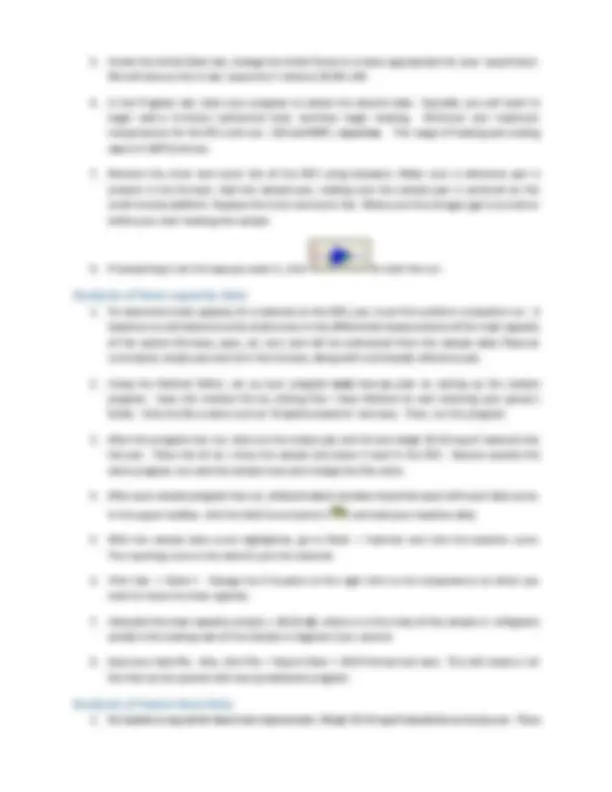





Study with the several resources on Docsity

Earn points by helping other students or get them with a premium plan


Prepare for your exams
Study with the several resources on Docsity

Earn points to download
Earn points by helping other students or get them with a premium plan
Community
Ask the community for help and clear up your study doubts
Discover the best universities in your country according to Docsity users
Free resources
Download our free guides on studying techniques, anxiety management strategies, and thesis advice from Docsity tutors
A laboratory experiment aimed at investigating the heat capacity and latent heat of various materials using Differential Scanning Calorimetry (DSC). Students are expected to read related literature, prepare samples, and use DSC equipment to measure heat capacity and latent heat. The experiment covers Debye heat capacity, phase transitions, and accuracy and precision in scanning calorimetry.
Typology: Study notes
1 / 5

This page cannot be seen from the preview
Don't miss anything!




The objective of this laboratory is for you to explore the heat capacity of materials due to atomic vibrations and the latent heat of phase transitions, and how these properties can be used to provide storage of thermal energy.
Read the chapter from Haines on differential scanning calorimetry and the introductory sections of the review on phase change materials (PCM).
Knowledge of the heat capacity of materials and the latent heat of phase transitions is necessary to understand the thermodynamics of materials and their phase transitions. For example, for measurements at constant pressure (e.g., in an unsealed container at atmospheric pressure, as in the current experiments), the change in enthalpy is given by the temperature integral of the heat capacity and the change in entropy is given by the temperature integral of the heat capacity divided by temperature. For most solids, at temperatures away from any phase transitions, the vibrations of the atoms control the heat capacity. At a first order phase transition, the latent heat gives the difference in enthalpy and entropy of the two phases.
Heat capacity and latent heat have many practical applications. For example, they are critical to determining the potential of a material for the storage of thermal energy from sunlight. The question in this case is how much heat energy can be stored in a material that is heated by sunlight to a temperature different from ambient by a given amount. Latent heat, for example, is the amount of heat that must be extracted from a volume of water at 0°C to permit it to freeze or which must be put in to a certain amount of ice to make it melt. Both the latent heat and heat capacity can be useful in identifying unknowns or for characterizing components of a mixture.
The heat capacity is the ratio of heat input into an object (for example in Watt seconds) to the temperature increase that results. The calorimeter works by very precisely applying power to the object
(in Watts) and very precisely measuring the temperature change (in Kelvin) per unit time and per unit mass of the object. Because it is convenient to load the sample in a container and because the heat capacity is an “extensive quantity” (i.e. how much heat is required to produce a given temperature change depends on how much material is present), it is convenient to compare the sample in its container to an identical but empty container. The difference represents the heat absorbed by the sample rather than the sample plus the container. By knowing the mass of sample you put in the container, you can determine the specific heat capacity, which is taken per unit mass. Thermodynamically the specific heat capacity is:
𝑐𝑐 =
In other words, it is the change in entropy of the material per unit temperature change multiplied by the temperature per mole of material.
The latent heat represents the change in the internal energy of a solid when passing from one phase to another. This can be a combination of a change in energy (for example , bond energy) and a change in entropy (for example , vibrational or configurational entropy). This value depends upon many factors in a given material. Note that because materials are liquids at higher temperatures than solids, the TS term must favor the liquid because as the temperature increases the entropy terms dominate , and the zero temperature energy of the solid (the bond energy , for example) must favor the solid. Thus, the energy of a solid is lower than the energy of a liquid while the entropy of the liquid is higher than the entropy of the solid.
Finally, note that if you supply heat to a solid at a constant rate then you would expect to see a linear increase in temperature if the specific heat capacity were constant and no phase transition was occurring. In your report for this laboratory determine the heat capacity for t h e specific materials (see below) as a function of temperature for each material from the relationship of heat flow to temperature (the derivative dQ/dT). Discuss the implication for relative dependences of entropy on temperature for different materials (why one material m i g h t have a different entropy compared to another).
If you measure the heat flow into a materia l during a phase change you w ill find heat flowing in at a constant temperature dur i ng me l t i ng and heat f l ow i ng out of the materia l at constant temperature dur i ng freez i ng. The amount of heat absorbed would be the area under the peak i n heat f l ow re l at i ve to the we ll - --behaved (at l east sort of) background due to the heat capac i ty of the sol i d. In your report, account for the heat capacity of the solid (it may change from one phase to another) as best you can and then estimate the amount of heat absorbed or given off in the phase change. This should be the latent heat. Compare your value with the literature.
If you observe any of the following behaviors please explain them as much as possible: (1): a change in the heat flow vs. temperature plot from the first cycle to following cycles, (2) the nature of any second peak you observe that is not the main melting/freezing phase transformation (if any) – you need not explain the origin of this peak but note the latent heat associated with it.
When you measure the heat flow as a function of temperature you may find hysteresis between the two peaks (freezing and melting) when you cycle the temperature of the calorimeter through the phase
Analysis of heat capacity data
Analysis of latent heat data
the li d on top, cr i mp and p l ace i n the DSC along w i th a reference pan.
Shut down When you are done using the DSC for the day, exit out of Pyris Manager and tell the TA. Do not turn off the DSC, intercooler, or gas regulator. Transfer all of your ASCII files and any screen shots or other files either onto a USB memory stick or via email, Box, Google Docs, etc. Take your sample out of the DSC and place it in the provided sample trash bin.